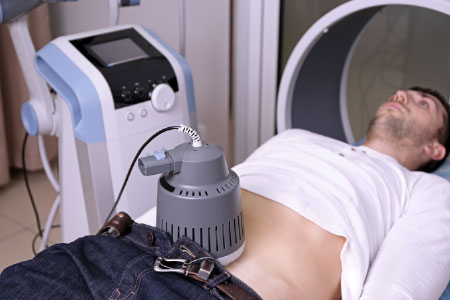Top-tier ultrasound machines can easily top $100,000, while even a used machine with basic features can set a clinic back $20,000. But a slew of new machines entering the market are aiming to totally disrupt the high-priced world of ultrasounds.
These changes come as coders are finding that sonography has become one of the most frequently-performed diagnostic procedures in urology and urogynecology offices—and this means that insurance companies are ramping up their reviews and audits of office-performed radiological procedures.
A New Wave of Ultrasound Devices That Connect to Smartphones
Perhaps heralding a new wave of hand-held, app-driven units, the Butterfly iQ is a full-body ultrasound that fits in your pocket—and pairs with an iPhone. Built by Guilford, Conn.-based Butterfly Network, the Butterfly iQ is a portable transducer which plugs into an iPhone and mates with an iOS app to display clear black and white images which are stored in a HIPAA-compliant cloud.
“The device actually works as three different transducers thanks to an ultra wide band matrix array,” noted one review. “This allows a clinician to perform a bunch of different scans and for the Butterfly iQ to be applicable in different clinical settings.”
The unit has received FDA clearance for 13 clinical applications, including urology. The price tag? Less than $2,000.
“Butterfly plans to augment the hardware capabilities with artificial intelligence software that could help clinicians interpret the images the device picks up,” noted Mobile Health News. “The company hopes to launch those features via an upgrade in 2018.”
One of the company’s own officers used the device to self-diagnose squamous-cell cancer, the MIT Technology Review reported.
“Usually, the sound waves are generated by a vibrating crystal,” MIT said. “But Butterfly’s machine instead uses 9,000 tiny drums etched onto a semiconductor chip.”
Improving Scans for Urinary Tract Infections
Butterfly was not the first company on the smart phone ultrasound scene, however. The Lumify from Philips has been available for more than a year and runs with Android devices. The gadget’s app-based system means it can work on whatever device fits best in any particular medical office.
Signostics is also entering the market with a unit which boasts “extreme miniaturization and MEMS sensors with machine learning and computer vision algorithms for industry-leading, first-time accuracy.” The company’s Uscan extracts 256 bladder slices per scan with industry-leading accuracy.
Most urologists frequently diagnose and treat both benign and malignant tumors of the urinary tract, and these devices help. And as surgical techniques and approaches have evolved, coding for these services has recently changed. Coupled with the new ICD-10 diagnostic codes, coding for uro-oncology has increased in complexity, which can lead to incorrect coding, denials and subsequent loss of revenue.
Precise Coding Can Allay Concerns Over Radiological Audits
Dr. Michael A. Ferragamo, Jr. helps urologists, coders, billers and any specialist involved in ultrasound studies in his conference for ProfEdOnDemand, “Urological Ultasound: Proper Coding and Documentation to Ensure Correct Reimbursement.” The 60-minute class overviews covers ultrasonic studies used in urology, indications for those studies, when to use modifiers -TC and -26, how to code for residual ultrasonic studies and more. For those wanting a deep-dive into urology codes for 2018, Dr. Ferragamo and Dr. Jonathan Rubenstein will host a two-day virtual boot camp focusing on 2018 urology coding updates. Sessions will cover coding for multiple urological procedures, pitfalls in uro-oncology coding, 2018 ICD-10 urology updates, and urology auditing, authorizations and the appeals process.




